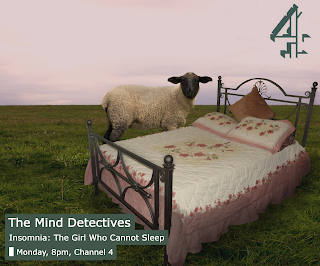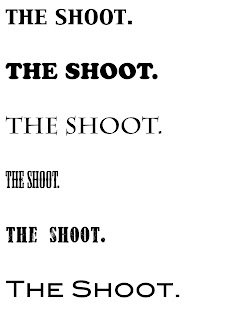We chose Channel 4 to be the channel in which our documentary on Game Keeping would be aired. This is because we looked into the history of thier shows, and most of them are documentaries on real life situations, such as the police shows and the other institutional programs aired, too. For example, 'The Secret Millionaire' and 'My Dream Farm' are both institutional, following employees on their everyday life. Other channels in our consideration included Sky One and ITV3. Sky One aired, 'Inside Gatwick', a documentary which was alike to ours with following a person in their institution. ITV3 were shown to air similar programs, too.
 This is the kind of foundation needed to build the newspaper advertisement ancillary task on. To do this, I looked through Google Images pages to get examples of adverts to use as a reference. The conventions of a Channel 4 advert are few in number, so it was easily applicable to our own documentary on Game Keeping, because we use a simplistic style for it. For example, the adverts always have a set colour scheme that's appropriate for the show in question. For example, the advert for 'The Mind Detectives' is simplistic, with the colour scheme of green. The colour surrounding the text boxes is this earthy green, to go with the image of the sheep next to a bed in the middle of a field.
This is the kind of foundation needed to build the newspaper advertisement ancillary task on. To do this, I looked through Google Images pages to get examples of adverts to use as a reference. The conventions of a Channel 4 advert are few in number, so it was easily applicable to our own documentary on Game Keeping, because we use a simplistic style for it. For example, the adverts always have a set colour scheme that's appropriate for the show in question. For example, the advert for 'The Mind Detectives' is simplistic, with the colour scheme of green. The colour surrounding the text boxes is this earthy green, to go with the image of the sheep next to a bed in the middle of a field. 
After looking through different adverts, I set about looking through fonts, to see which one looked better, and more professional. In the end, I settled on a font that was closest to the Channel 4 advert's font of 'The Mind Detectives'.
 Next, came the mock-ups of the newspaper advert, which were just a series text of texts, telling us where to put everything.
Next, came the mock-ups of the newspaper advert, which were just a series text of texts, telling us where to put everything.
We kept to the style that Channel 4 is known for with a still image from the footage of the gunmen aiming, on a ledge in the quarry. The text and boxing are both as close as we could get to the professional adverts, with a darker green surrounding the white text. The Channel 4 logo is coloured in the same green as the boxes to keep within the colour scheme. The font for this was chosen to keep in with the style of both Channel 4 adverts, and the style of typical hunting magazines. We found that a lot of the DPS' in said magazines had this kind of font for their titles.
For our second ancillary task, we had to create a double page spread for a TV magazine. To do this, both Amy and I looked through well known TV magazines to find the type of double page spreads, so we could pick and choose which looked better.
We settled on one magazine to make the foundation, and I started outlining the page in a simple layout, using text labels and boxes. We felt this was a good starting point for the ancillary tasks.
After this was made, I delved into further research of typical double page spreads in TV magazines. I settled on one, and after speaking to Amy, we decided to base our task on this layout, as it seemed to fit in with the simplistic style of our newspaper advert more than the other ones we saw.
This required a change in the plan. This new mock up worked in our favor, because it allowed me to add still shots from the footage and to reflect on the research more. We found that there were more magazines with this kind of look to them, so we altered the mock up to look more professional. By this stage, the task started to look less amateur and more advanced.
Add in: The need to turn off the cameras to preserve battery, meaning that we missed some things, e.g. other birds flying, the Deer, people's reactions - insignificant, but we would have preferred to have them in, to include different things and to diverge from the mass of shooting shots etc.
The documentary was all filmed in one
day due to time table restrictions from the gamekeeper along with the
ambition to keep the same effect as we only wanted to follow one day
of the shoot , this also worked because the different weather changes
would have been noticeable and the people there would have also
changed because each shooting day is different we also wouldn't have
been able to control the clothing of which they would have been
wearing, therefore we think that the one day shoot worked well as it
was as controlled as we could make it.




No comments:
Post a Comment